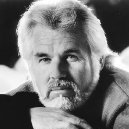-
Posts
221 -
Joined
-
Last visited
Personal Information
- I love Bob Dole
Recent Profile Visitors
The recent visitors block is disabled and is not being shown to other users.
steamboat_charlie's Achievements
-
I haven't seen this discussed in depth here (I could have missed it), and I view this as a potential seismic event in terms of future implications for the collegiate athletics landscape. I'll do my best to summarize below. Disclaimer: I'm not a lawyer. What are the facts? Two weeks ago, the NCAA and its P5 conferences (Big 10, Big 12, ACC, SEC, Pac 12) agreed upon terms for a settlement to pay approximately $2.8 billion in back-pay to student athletes that competed between 2017 - 2020, a period during which NIL payments were still prohibited. While an agreement was reached, the settlement hasn't yet been accepted by the federal judge. This should take place in the next several months. The $2.8 billion will be paid over a 10 year period. About 40% of the settlement will be paid by the NCAA itself. Power five conference members will pay about 24%. The remaining 35% will be paid by non-P5 schools. The settlement will largely be funded by NCAA withholding revenue distributions (primarily from NCAA basketball tournament revenue) from its member institutions. While the majority of P5 institutions voted to accept the terms of the proposed agreement, many institutions were not in favor--notably, many SEC institutions. In addition to the monetary back-pay settlement, this proposed agreement would provide a framework for universities to share revenue with their players. Revenue sharing in the proposed agreement would be permitted up to approximately $20 Million, representing approximately 22% of revenue for an average P5 institution. Allocation of shared revenue will be at the discretion of each member institution (i.e. each school can decide who they want to pay, and how much). Additionally, scholarship limits will be removed whole-sale, and replaced with roster limits. If everything is approved on a reasonable timeline, this would take effect as early as Fall 2025. What remains unknown? While terms have been agreed upon, there still isn't an official agreement in place for the judge to review. Even once there is, there will still be a several month review process and there is no guarantee that this judge will approve the agreement. While there is a feeling from many that it will be improved, rejection is a possibility. Schools paying student athletes directly throws gasoline onto an already lit fire with regard to athletes' treatment as employees by universities. There are multiple outstanding cases regarding this topic, and the ability for student athletes to unionize, and consequently, collectively bargain with their universities. Despite the particulars of revenue sharing being left to institutions individually, each school is still subject to Title IX regulation. Are schools within their rights to pay players on a percentage basis based on program revenues, or do these payments need to be distributed equitably across men's and women's programs? It's easy to speculate how an institution paying $19 million of their $20 million limit to football players could open themselves up to serious litigation risk with respect to Title IX. This would not "take the place" of NIL. However, the future of NIL funding and collectives is completely unclear. Would some funding currently directed toward NIL efforts be shifted to the athletic program itself? Will schools competing at the top level in football treat this as a soft cap and use NIL to incentivize players above and beyond the $20 million? Seems likely. My take: implications for NCAA D1 wrestling The $2.8 billion back-pay obligation is not a major issue for wrestling. The settlement is to be paid out over 10 years and split across all member institutions. The most any school will be "paying" on an annual basis is <$3 million. When we're talking about a majority of P5 institutions with annual budgets north of $100 million, it's not exactly a rounding error, but it does feel manageable. Most university presidents were happy to jump at a settlement they they could wrap their arms around that maintains some semblance of the status quo, in an effort to put a stay on the potential hundreds of additional lawsuits that might be brought against them on this matter. If this were to continue in the court system there is/was a non-zero chance of a significantly larger settlement, of a magnitude that would simply crush the NCAA--some presidents were in favor of simply letting it burn down, but most are just happy to kick the can down the road for 10 years and let someone else deal with it when the time comes. The real issue for wrestling is not the payment itself, but rather the future payment of athletes. Tightening the athletics budget by a couple million dollars doesn't upset the apple cart. However, tightening it by ~$20 million (if ~$20 million is going to be paid to football and basketball players) is a major, major problem. Athletic departments are going to have to make some very difficult decisions. Some departments are simply going to say, "No--we can't afford to pay players and we're not going to try to compete with the universities that can." This is actually a better scenario for wrestling at those institutions. The schools to watch for are the schools that are going to try to compete with the big boys by spending up to their limit, but don't have the same financial flexibility. It's hard for me to imagine any of the ~$20 million revenue share will find its way into the pockets of wrestlers, unless a school decides to make an equal flat payment to all athletes. The removal of scholarship limits will only serve to further increase the gap between the haves and have nots in D1 wrestling, and continues the current trend of the NIL era. If this goes through as presently envisioned, there are going to be D1 sports programs eliminated from MANY universities. When programs are getting put on the chopping block, I think we all know wrestling is one of the first names mentioned.
-
Difficult choice. As of this moment I think I'd lean Blaze but I can see an argument for any of the three. It'll be interesting to see how each guy is handled as a freshman. All three are good enough to go right away.
-
From 125 - 157 they were seeded: Camacho - 7 seed - DNP (-2) Orine - 3 seed - 8th (-5) Jack - 4 seed - 7th (-3) Arrington - 3 seed - DNP (-6) Scott - 4 seed - DNP (-5) IMO every one of those guys is somewhere between the 6th and 12th best wrestler at their respective weights. Every single one of them won the ACC "tournament" and was subsequently overseeded because of it.
-
Definitely a fair question, and it's actually much worse than I would've even guessed digging into it a little. Looking just at seed/place difference, NC State was at -22 in this year's tourney. This is the worst mark in the last 10 years of the tournament (possibly all time, but I stopped looking after 10 years). Beyond that, NC State was last place in this metric each of the past 3 seasons (-22 in 2024, -11 in 2023, -11 in 2022). Obvious conclusions here are that they're either being overseeded, or completely falling apart at the end of the year. Probably a bit of both but I would lean more towards the latter.
-
I actually love this hire.
-
I don't think there's a clear cut #2 at all. WrestleStat currently projects Oklahoma State as a solid #2, which I think is fair. And that's with Spratley/Hughes/Jamison/Williams scoring 7 team points between them--which I think is very low. Ohio State has a lot of upside up and down the lineup, but Mendez can't do better than he did last year, and I'd venture to say the same about Welsh. Feldman could take another step up so that shouldn't be ignored. Iowa with Parco and Brands could get to around that 70 point mark. With Ferrari even more. I wouldn't count out NC State either. If Trumble emerges as a contender they could have 7 or 8 AA's and a finalist or two.
-
It's a fair point, but also worth considering that different people thrive in different environments. He developed into a national champion with his current coach. It's possible that this is the best situation for him, despite the perceived lack of competition in the room.
-
I suppose Taylor could hook his whole team up with Coach Cal. DT had to seek that out on his own, and figure out how to win in the margins away from Cael, before he got over the hump and started actually making world teams.
-

someone used to call out pop on no alcohol
steamboat_charlie replied to Scouts Honor's topic in College Wrestling
I'm confused by the title of this thread... But anyway, I don't recall seeing people "calling out" Pop. More just acknowledging that his policy is his policy. His program has a reputation for strict abstinence, year round, no second chances. Most programs have rules against drinking and/or partying during the season. His are just more strict, and there are pros and cons to that approach. -
This happens all the time. Sometimes an “understanding” is actually the opposite. It was beneficial for Oklahoma State to bring in Coleman last year. People get skipped over when they think they’re in line just about as often as they get chosen.
-
Oh. First time seeing one of those.
-
Did you take this picture with a flip phone? I mean, I know what it is, but at the same time I feel like I'm in 9th grade bio examining a petri dish.



.png)

